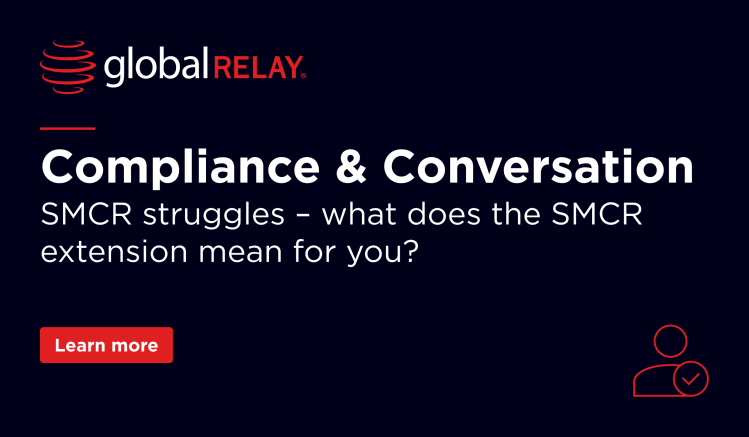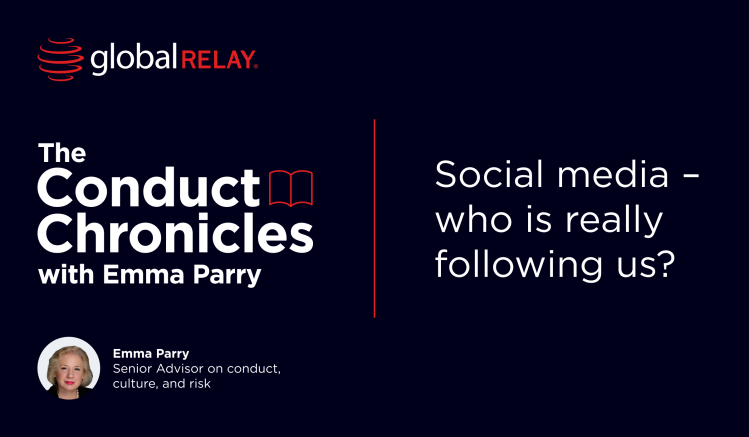
What is the Gartner Digital Communications Governance Magic Quadrant?
Endless pings from WhatsApps, slack channels, teams messages and social media are plaguing regulated firms. With each app on its own interface, it’s becoming increasingly difficult for compliant firms to maintain digital communications governance strategies, and enforce use policies with confidence.
Written by a human
Thankfully, plenty of digital communications governance solutions exist to automate the capture, inspection and archiving of in-house and external messaging.
And the Gartner Digital Communications Governance Magic Quadrant™ exists to help firms compare and contrast the top 20-22 solutions. It’s vital for firms to learn how the Magic Quadrant works, and how it can be applied to support digital comms governance going forward.
What is the Magic Quadrant?
The Gartner Magic Quadrant™ is a visual representation of the strengths and weaknesses of competing technology organizations. It’s a quadrant graph, and categorizes all providers into four categories:
- Leader: at the forefront of the industry today, and well-positioned for the future
- Visionary: isn’t currently operating at the forefront of the market, but has a good strategy for future operations
- Niche player: operates successfully with a small portion of the market
- Challenger: is operating well today, but does not have a good strategy for future operations
The Magic Quadrant™ is synonymous with Gartner’s brand, and represents both a well-researched methodology, and well-respected reports. They’re usually published within a Market Guide on the same topic. Strict guidelines for independence and unbiased research mean that tickets into the report can’t be bought – this is not a PR campaign.
The Magic Quadrant™ helps to:
- “Get quickly educated about a market’s competing technology providers and their ability to deliver on what end users require today and in the future
- Understand how a market’s technology providers are competitively positioned and the strategies they are using to compete for end-user business
- Compare a technology provider’s strengths and challenges with your specific needs”
Digital communications governance: trend analysis
The first edition of the Gartner Digital Communications Governance Magic Quadrant™ was published in 2023, which provides only a single edition to work from. In that publication, the Gartner team identified four key trends in the communications governance sector.
It’s important to note that the trends identified in this edition might not be the same as future editions. But since there’s only one published report to rely on, that’s the data we’re going to use.
Increasing regulatory mandates
Customers are facing a steady increase in regulatory agendas as digital technology evolves. While legislative bodies strive to catch up to these advancements, they bring an onslaught of new rules and requirements for compliant organizations to follow.
For example, in the last few years alone we had the release of a few high-profile regs:
- Sustainability disclosure requirements (UK)
- MiCA (EU)
- Consumer Duty (UK)
- Financial Services and Markets Act (UK)
- DORA (UK)
- Open Banking (US)
And where enterprise companies are operating in multiple jurisdictions, their horizon-scanning capabilities are doubled, or sometimes even tripled as the requirements vary by location.
To meet these increasing regulatory mandates, digital communications governance tools are required. Firms want access to plug-and-play options as they don’t have the time or money to waste on developing in-house systems. They need an immediately viable solution.
Internally developed communications channels
Firms are developing their own internal messaging and communications systems. As businesses make the switch between outdated legacy systems to cloud-based management, often among their goals is to improve employee and customer experience.
For example, we’re seeing a rise in customer chatbots on websites, which can automatically handle simple customer service requests and triage queries to the right department. This aims to reduce customer wait times, and improve the efficiency of internal departments as common FAQs can be answered directly by the chatbot. It means only the most complex queries are passed through to an employee.
Similarly, employees often have designated messaging channels to communicate with one another at work. This replaces lengthy email threads and acts more like an instant messenger service.
Due to increasing messaging channels like these, it’s harder for brands to comply with best practices and regulations. They need to be more intentional with digital communications governance, and create effective strategies to succeed.
More regulatory scrutiny
Recent enforcements by the SEC and DOJ prove that the regulators are hotly focused on mobile apps. For example, the SEC’s rule 17a-4 requires financial firms to store and preserve all internal and external communication records, including instant messaging apps.
In 2023 eleven different Wall Street firms were penalized for widespread off-channel communication breaches, leading to SEC fines of $289 million. Employees were found to have been communicating through WhatsApp, iMessage and signal, where their employers could not properly preserve and retain these digital communications.
With this increased scrutiny, the researchers have identified the need for regulated companies to properly prove and demonstrate their compliance in communications. It’s increased the demand for compliant communications systems within the financial sector on a broader spectrum, and the need for a comprehensive report like the Magic Quadrant to evaluate options.
Customer mistrust in AI technology
Finally, the 2023 Gartner report reviewed clients’ attitudes and opinions towards using AI in comms capture and monitoring systems.
A recent roundtable discussion, including stakeholders from companies, accounting bodies, academics and investors echoed this sentiment. While contributors noted the existence of AI regulation, a large focus of the discussion was focused on the risks and challenges associated with using AI technology, and how to manage these to benefit the users.
The Magic Quadrant™ results will therefore consider the technological basis for each digital communications solution, and categorize providers to match their attitudes.
We’re proud to announce that Global Relay has been named a Leader in the 2025 Gartner® Magic Quadrant™ for Digital Communications Governance and Archiving Solutions.



